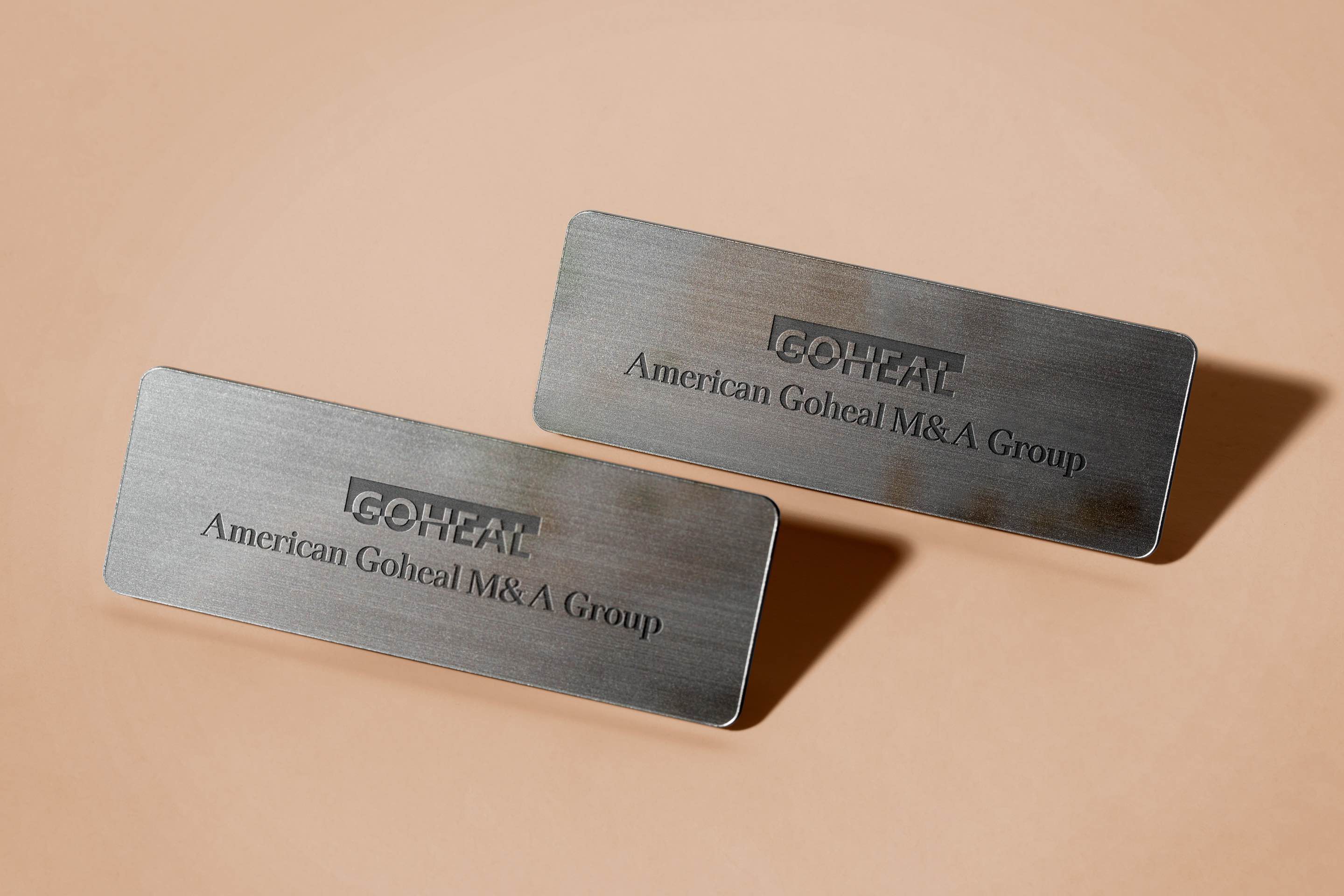"On the surface, it's calm, but in fact, there are undercurrents." This is a classic footnote to mergers and acquisitions in the investment circle. The battlefield is not only on the market, but also on the financial skills behind it. The real masters never just "watch the market", but "watch people".
If the secondary market is a chessboard, then mergers and acquisitions are a relay chess game. However, this game is often "the one who is a step ahead will benefit, and the one who misses a move will be trapped". In the past year, large-scale mergers and acquisitions of tens of billions of yuan have been staged frequently, and the capital market has been noisy and lively. However, in Goheal's view, behind these eye-catching merger stories, there are often carefully laid "financial skills mazes".

American Goheal M&A Group
The real masters understand not only the announcements and K-lines, but also the trading skills hidden behind the asset packages, performance commitments, capital flows and gambling agreements. Today, let's disassemble this "financial skills array" layer by layer and give investors a set of identification tactics from "watching the market to watching people".
1. Entrance to the maze: The chain of gambling commitments is cheese and trap
The "cheese" in the capital market is always tempting, especially those beautiful performance commitments. 1.1 billion net profit in five years sounds like the next A-share Moutai, but in fact it may be a sinking quagmire. After a glass and ceramic company was acquired at a high premium, its performance was hit for four consecutive years, and the founder finally had to pay nearly 1 billion.
The key to this kind of chain gambling is that the profit figures "can be written but not fulfilled", the compensation mechanism "can be set but not executed", and the control rights "can be given but not controlled". Goheal has been deeply involved in many restructuring due diligence projects and found an important detail-the commitment period of many projects is not synchronized with the control rights delivery period. It is superficially controlled but actually out of control.
Remember, the real risk is never bad debts, but you have no right to manage bad debts.
2. Entrance to the maze 2: Three consecutive hits of valuation fog, a feast of "pseudo-synergy"
Some valuations are not high, but inflated; they are not expensive, but you can see the routine. There are three typical tricks: one is "peer packaging", creating seemingly reasonable industrial synergy; the second is "asset backflow", using related parties to transfer from left hand to right hand and then resell to listed companies at a high price; the third is "concept stacking", always rubbing "photovoltaic storage integration", "new quality productivity" and "AI + industrial mother machine".
A forestry enterprise acquired a flower grower, which sounds like a beautiful combination of "green water and green mountains are gold and silver mountains", but the audit found that the income of its core customers was actually fictitious, and finally found that more than 70% of the data was "paper wealth".
A semiconductor project is even more terrifying-after the IPO failed, it turned to do mergers and acquisitions, and only used the three words "AI chip" to package the valuation of 5 billion and successfully cashed out. "Old wine in a new bottle" is a blow to some investors.
Goheal suggested that you should not only look at how sexy the project is, but also how real the assets are.
3. Entrance 3 of the maze: Where the money goes, where the trader hides
The path of money is the path of truth.
On the surface, the payment progress of the merger and acquisition is not delayed or owed, but in fact, a closer look will reveal the trick. In a certain restructuring case, the controlling rights of the target have been transferred, but the transaction amount is still more than 60 million yuan unpaid. You think the transaction is completed, but it is actually "get on the bus first and then pay the ticket"; you think the consideration is clear, but in fact there is an "automatic price adjustment machine gun" hidden in the terms.
What's more, there is a harvester hidden in the terms. For example, in a certain merger and acquisition project, a seemingly inconspicuous "compensation calculation base expansion clause" was designed, which eventually led to the actual compensation amount as high as three times the original consideration. There is no pie in the sky, only high-imitation meteorites.
This is the "funds-ownership-clauses" three-stage verification model summarized by Goheal in multiple projects: where the money is paid, who is in control, and what clauses are three guiding lighthouses in the fog of mergers and acquisitions.
4. How to "break the formation"? Goheal's three-layer penetration technique
Faced with this maze, how to unravel the mystery? Goheal suggests that you have to have "eyes through the wall" - read the logic behind the data and find the flaws in the logical confusion.
The first is the penetration of financial authenticity. Don't just look at the financial statements, but check the matching degree of water and electricity fees, social security payments, business contracts and the number of employees. A flower company claimed that its annual sales were 600 million, but it had only 40 employees and its office water and electricity were suspiciously low. Upon investigation, it was found that its top five customers were all "shell companies".
The second is structural penetration. The acquirer often conducts hidden control through multi-layer SPVs. Investors must draw a "multi-layer structure diagram" to find the starting point and landing point of the capital chain. Don't be fooled by "shell on shell", and don't be blinded by "head holding".
The third is the identification of regulatory signals. Reading an inquiry letter is better than reading ten years of announcements. If the restructuring briefing only sees the endorsement of legal provisions and avoids talking about the actual business content, this is likely to be a signal flare of "forced pass". Don't forget that the inquiry letter from the CSRC is not written casually, but is targeted.
5. How do investors "keep an eye on someone"? Three weapons are needed
The first weapon to keep an eye on someone is the "behavior trajectory map". Record every key time point: big change in performance → sudden change in equity → surprise announcement → reduction of senior management holdings. Is there any advance layout behind each step? Six days before the announcement of the merger and acquisition of a certain project, the actual controller's associated account quietly built a position and was eventually locked by the regulator.
The second weapon is "radar monitoring". Goheal believes that it is possible to monitor the stock price changes six months before the suspension. If a stock rises 20% inexplicably before the news is released, it is not God's choice, but someone got the script in advance.
The third magic weapon is the "reverse bet clause". Don't just accept the target's performance commitment, but also require it to be fully responsible for hidden liabilities and compliance defects. For example, in a photovoltaic merger and acquisition case, the target company took the initiative to disclose two undisclosed environmental protection administrative penalties through "reverse betting".
6. When capital meets regulation, the game is changing
In 2024, M&A transactions worth tens of billions of yuan increased by 35% year-on-year. This certainly shows that capital enthusiasm remains unabated, but it also shows a reality: M&A has become the first choice for more and more companies to get out of the circle, get out of trouble, and transform.
However, since the implementation of the "Six Articles on M&A", the regulatory caliber has changed from "can pass" to "dare to ask", and from "compliance" to "reasonable". Industrial synergy, performance foundation, and valuation logic all need to tell a good "story", and there must be logic, evidence, and paths.
Goheal suggested that investors build their own "M&A risk radar map" to monitor behaviors such as sudden equity investment, valuation jumps, over-commitments, interspersed related transactions, and abnormal capital reflux with 20 core indicators. An operational "risk assessment matrix" is more useful than a market value forecast table.

Goheal Group
The "Art of War" says: "A good fighter will attack others instead of being attacked by others." M&A is also a battle. Only by knowing people, the situation, and the art can you win every battle.
From watching the market to watching people, from valuation to behavioral trajectories, from announcement language to financial motives, real investors do not look at who is rising, but who is in the game.
Goheal always believes that penetrating the fog of restructuring requires not only accounting eyes and legal brains, but also a little detective spirit.
So, the next question is - in 2025, when mergers and acquisitions are becoming increasingly complex and supervision is becoming more precise, can investors rely on AI and data modeling to achieve real-time perception and automatic dismantling of the "financial maze"?
[About Goheal] Goheal is a leading investment holding company focusing on global mergers and acquisitions holdings. It has deeply cultivated the three core business areas of listed company control acquisition, listed company mergers and acquisitions and restructuring, and listed company capital operation. With its deep professional strength and rich experience, it provides enterprises with full life cycle services from mergers and acquisitions to restructuring and capital operation, aiming to maximize corporate value and long-term benefit growth.